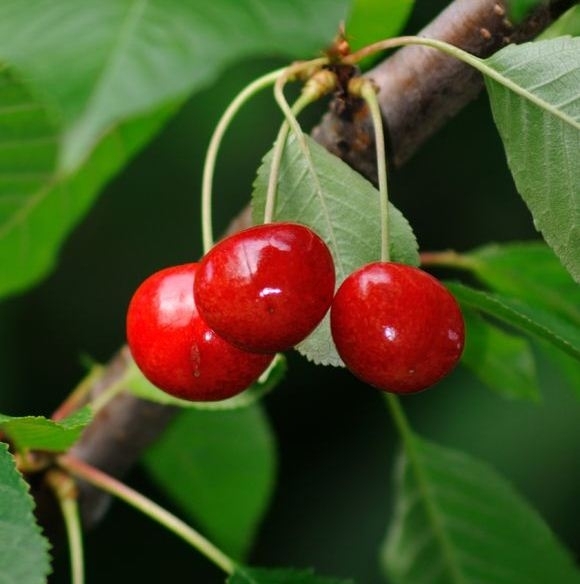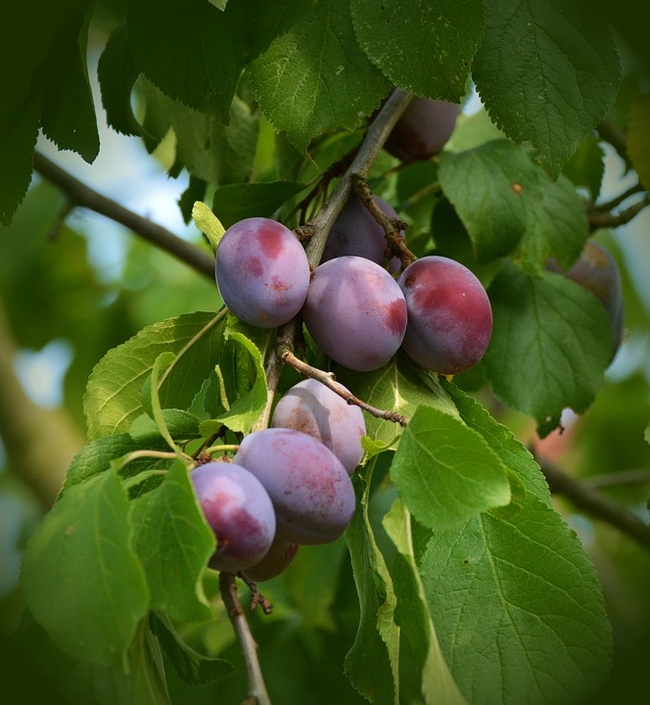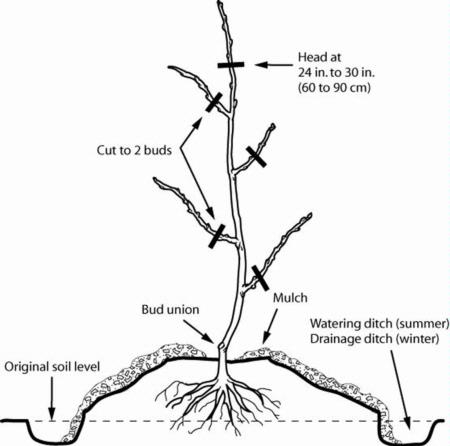If you missed our planting and pruning Bare Root Fruit Trees Class, you can watch the recording on our UCCE Stanislaus County Master Gardener YouTube Channel. The class includes information on deciduous fruit trees, including apple, pear, cherry, nectarine, peach, plum, and apricot.
What about Citrus?
Citrus trees such as oranges, lemons, grapefruits and kumquats are evergreen trees and need different care than deciduous trees. Our program will offer an online class on March 22 on Caring for Citrus. Registration coming in early March 2022.
- Author: Anne Schellman

Deciduous Fruit Trees
Deciduous fruit trees lose their leaves each winter. These trees include apple, pear, cherry, nectarine, peach, plum, and apricot; it does not include citrus or avocado trees, which are evergreen.
What is a Bare Root Fruit Tree?
A “bare root” fruit tree is a tree sold in its dormant state. The tree has no leaves, is not actively growing, and is sold without a pot. When you choose your tree, a store employee pulls it out of a large container with other trees that is filled with sawdust. The tree roots are wrapped with moistened newspaper, and then covered over with butcher paper and tied with a string. You'll be advised to take it home and plant it right away. Some garden centers may sell bare root fruit trees in plastic bags. If the material around the roots is moist and the roots have not dried out, the tree should be healthy.
Choosing a Fruit Tree

I have a Small Yard or an Apartment, Can I have a Fruit Tree?
Deciduous fruit trees as well as evergreen fruit trees get very large. Fruit trees grafted onto dwarfing rootstock and labeled “genetic dwarf” are smaller than semi-dwarf and standard trees, however they have extensive roots and are not recommended for containers. One exception is the kumquat, a sweet and tangy citrus fruit. Small yards can have fruit trees, but you have to start your tree out right for this to work.
If you live in an apartment and want fruit, you can grow your own blueberries or strawberries in containers. See our publications:
Blueberries in Your Garden https://ucanr.edu/sites/CEStanislausCo/files/111737.pdf
Strawberries in Your Garden https://ucanr.edu/sites/CEStanislausCo/files/111651.pdf
Registration Open for our Free Class
We hope to “see” you at our Planting and Pruning Bare Root Fruit Trees Zoom class at the end of the month! If you miss it, you can find it later on our YouTube Channel.
When: Tuesday, January 25, 2022 6:00-7:30 p.m.
Cost: Free
Register at: http://ucanr.edu/bareroot2022
Instructors: Hector Vera-Uribe and Johnny Mullins
- Author: Ed Perry
For gardeners the coming of winter means, among many other things, the beginning of the bare root planting season. Local nurseries will soon receive good supplies of bare root fruit and ornamental trees, roses, grapes, berries, and vegetables such as asparagus and rhubarb. Unlike container plants, bare root plants are dug from the field when dormant and separated from the soil. This allows the nursery grower to ship plants at a lower cost and means a good saving for the buyer.
Since all the soil has been removed from the roots, take care to prevent them from drying out while you transport the tree or dig the planting hole. Never allow the plant roots to be exposed to sun and wind for more than just a few minutes. You can protect the roots for a few hours by placing them in a moist plastic bag or by covering them with wet newspaper or cloth. It's best to plant and water your bare root trees right away. If you need to delay planting for a day or more, you should “heel in” the plants. “Heeling in” is a method of protecting plant roots by placing the plants into a hole or shallow trench and covering the roots with moist soil, sand or sawdust.

You should consider trees, shrubs and other perennial plants to be long term investments. It's therefore worth the effort to pick the proper place for the plant. Fruit trees especially need full sun to produce properly, as well as room to grow. Most standard fruit trees can be planted 10 to 15 feet apart, or much closer if you are willing to spend time doing heavy pruning and careful training each year. Semi-dwarf fruit trees are good choices for a garden with limited space. It is not a good idea to plant a fruit tree in a lawn area, as the lawn's water requirements are not compatible with those of the tree. Fruit trees growing in lawns often grow poorly or are killed by shallow, frequent lawn irrigation.
Fruit trees prefer well drained soils at least 3 or 4 feet deep but will grow in shallower soils if you water carefully. Plant your tree when the soil is moist enough to dig easily. Do not plant in wet, sticky soil. The planting hole should be 2 to 3 times wider than the root spread, but only deep enough to plant the tree at the same level as it grew in the nursery. A tree planted in a deep hole will settle too much after watering. When this happens the tree is often attacked by a soil borne fungus disease where the soil contacts the trunk.
Before you plant the tree, carefully cut off broken or badly damaged roots with sharp pruning shears. Do not prune the roots to fit the hole. If necessary, put soil in the bottom of the hole so that the tree is slightly higher than the soil line. This will allow the tree to settle slightly without becoming buried. Using the same soil that came out of the hole, carefully cover the roots completely, then water thoroughly to settle the soil around the roots. You may want to complete the planting job by placing a mulch on the ground around the tree to help control weeds and conserve moisture.
For more information on care of your newly planted bare root fruit trees, berries, grapes, and roses, visit The California Backyard Orchard.

